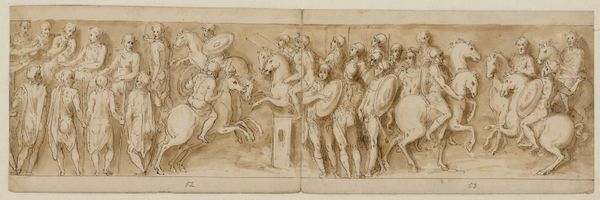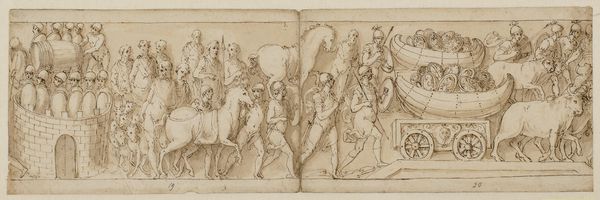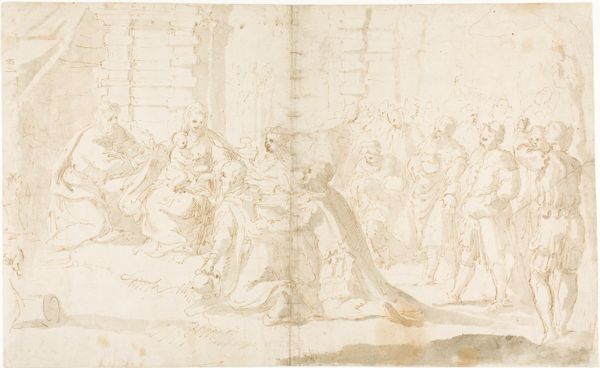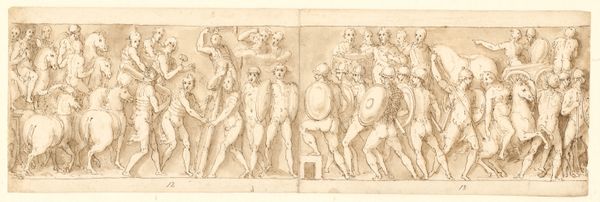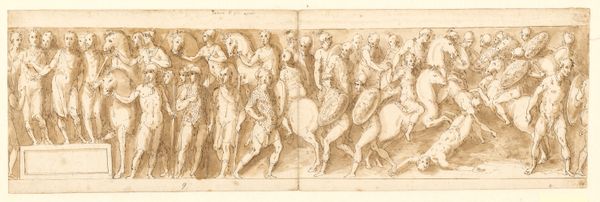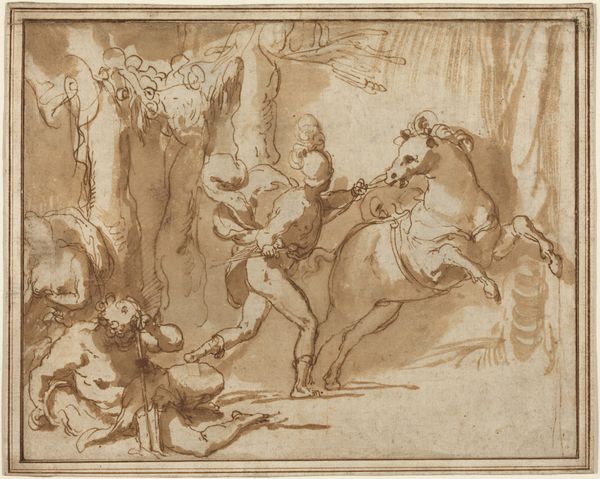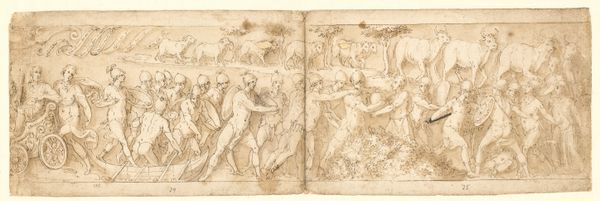
Roman soldiers building a camp (end of LXXXII); an address (LXXXIII); Romans crossing a river on a pontoon bridge (LXXXIV); women are taken prisoner (beginning of LXXXV) 1544 - 1618
0:00
0:00
drawing, etching
#
drawing
#
etching
#
etching
#
11_renaissance
#
history-painting
#
academic-art
Dimensions: 133 mm (height) x 432 mm (width) (bladmaal)
Editor: So, here we have "Roman soldiers building a camp," and other scenes by Giovanni Guerra, drawn sometime between 1544 and 1618. It's a drawing and etching, and it feels a bit like a classical frieze in its composition. I'm immediately struck by how much action Guerra manages to pack into a single panel. What do you see in this piece? Curator: The first thing that grabs me is how Guerra, though working centuries later, is echoing the visual language of ancient Rome itself. Note the idealized bodies, the focus on military might, the very frieze-like arrangement as you mentioned. These weren’t just aesthetic choices; they are loaded symbols. Editor: Symbols of what, exactly? Power? Curator: Exactly. And continuity. The Renaissance, where Guerra worked, saw a resurgence of interest in classical antiquity. Artists like Guerra used Roman imagery to legitimize contemporary power structures. What emotions do the actions and arrangements of bodies suggest to you? Editor: It seems quite violent – there’s women being taken prisoner. Yet the figures have this sort of detached, idealized look. Almost like mannequins acting out a play. Curator: Yes, the detachment is key. This isn’t raw, visceral war. It’s war presented as a symbol, an orderly display of strength and conquest. Consider how that contrasts with later depictions of conflict, say, in Goya. Where Goya exposes the brutal realities, Guerra gives us a carefully constructed representation meant to inspire awe. Editor: So it’s less about the human cost and more about the symbolic impact? It really makes you think about how we choose to remember and represent history. Thanks! Curator: Precisely! And how artists, consciously or unconsciously, participate in shaping that memory through visual symbols that echo through the ages. Thanks to you.
Comments
No comments
Be the first to comment and join the conversation on the ultimate creative platform.

